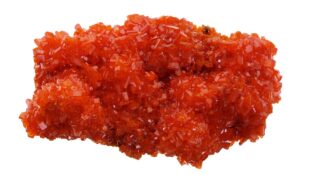

How Often Should I Take My Remedy?
"The more intense the symptoms the more frequent the remedy should be given." Here's a guide on how often to dose and when improvements should be seen if the remedy is correct.

Research in Homeopathy
“Shown below are abstracts from human, animal, plant and in-vitro scientific studies that attest the reality that there is indeed evidence for homeopathy, and lots of it.”

Dishwashing liquid? – You’re soaking in it! Erica’s story
A quick-thinking Mum saved the day with homeopathy when running water did little to reduce the pain and swelling caused by detergent in a one-year-old's eyes.

Know Your Remedies: Kalium Bichromicum (Kali-bi.)
Homeopathic Kalium bichromicum is a useful remedy for thick, gluey or ropy discharges. The person feels chilly, gloomy, and often complains of pains in 'small spots'.

VIDEO: 3 Key Remedies for Kids
This extract from the Homeopathy for Children webinar series looks at three important remedies for childhood health issues, behavioural problems, and learning difficulties.

Ask Kaviraj – Issue 5 – Homeopathy for Fleas, Plants & Pests
Kaviraj provided suggestions for using homeopathy for horse chestnut trees and as a deterrent for fleas, ants, cockroaches, and moths.

Remedies for Barking Coughs
Tickly coughs, chesty coughs, croupy coughs - the right homeopathic remedy and some simple self-help tips ring relief.

Tutorial 16 – What to Expect (Part B)
Continuing on from Part A, this tutorial explains the significance of difference responses to a homeopathic remedy - and what they mean for your treatment.

Know Your Remedies: Lac Caninum (Lac-C.)
The person needing Lac caninum (dog's milk) as a remedy makes mistakes while writing or speaking, craves salt, spices or alcohol, and dislikes the heat. Does this sound like you?



